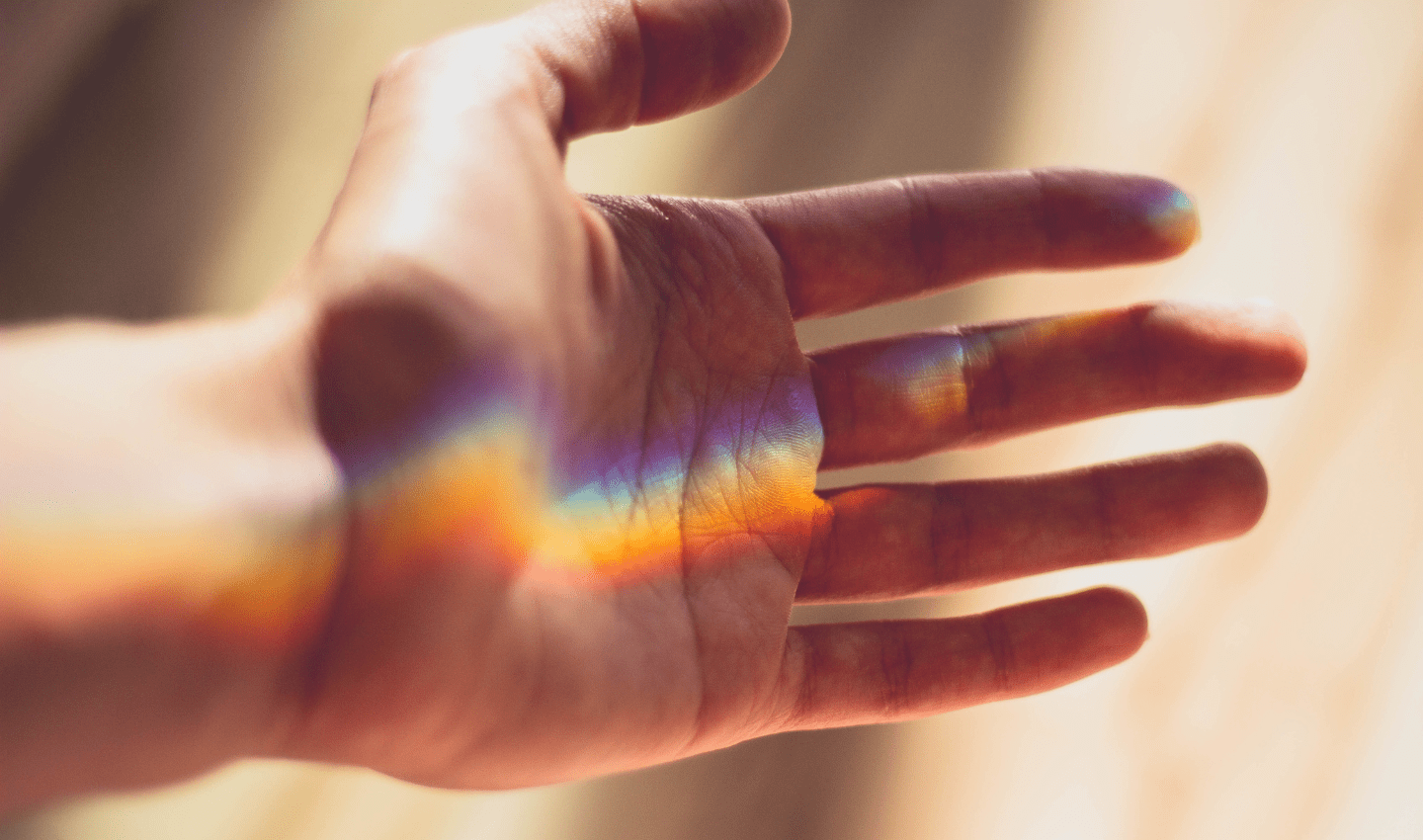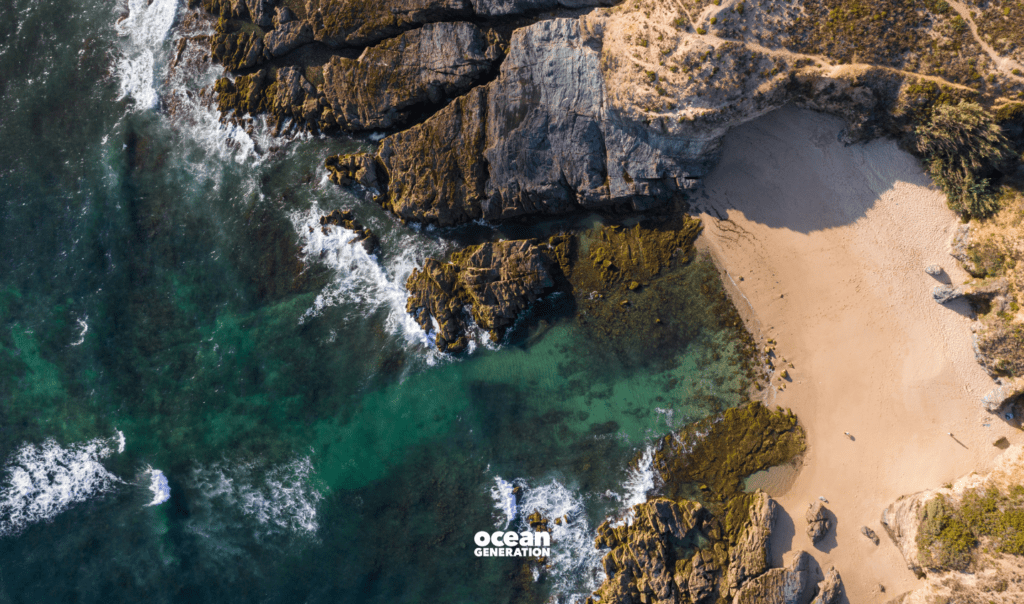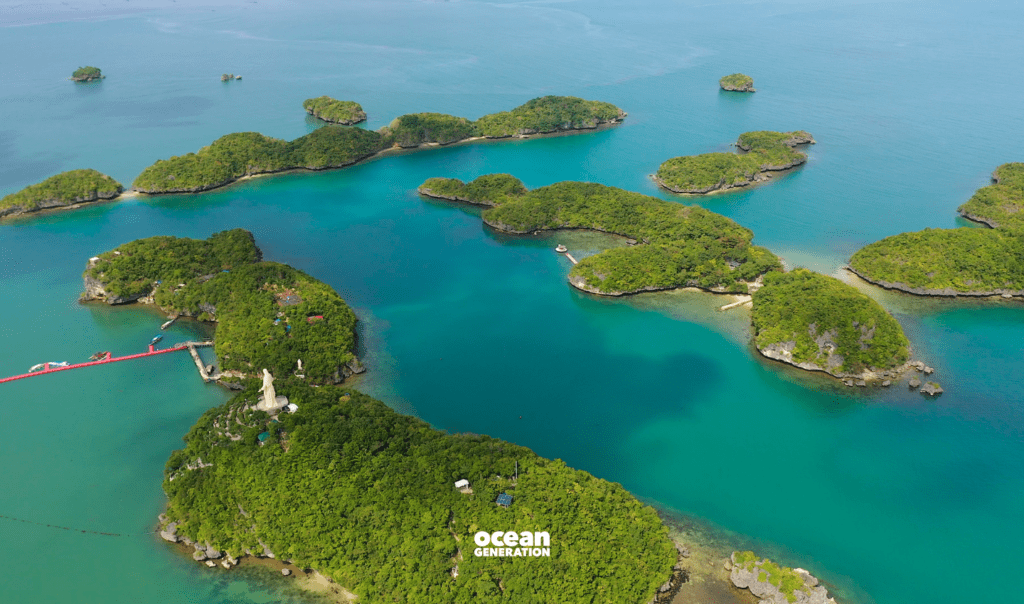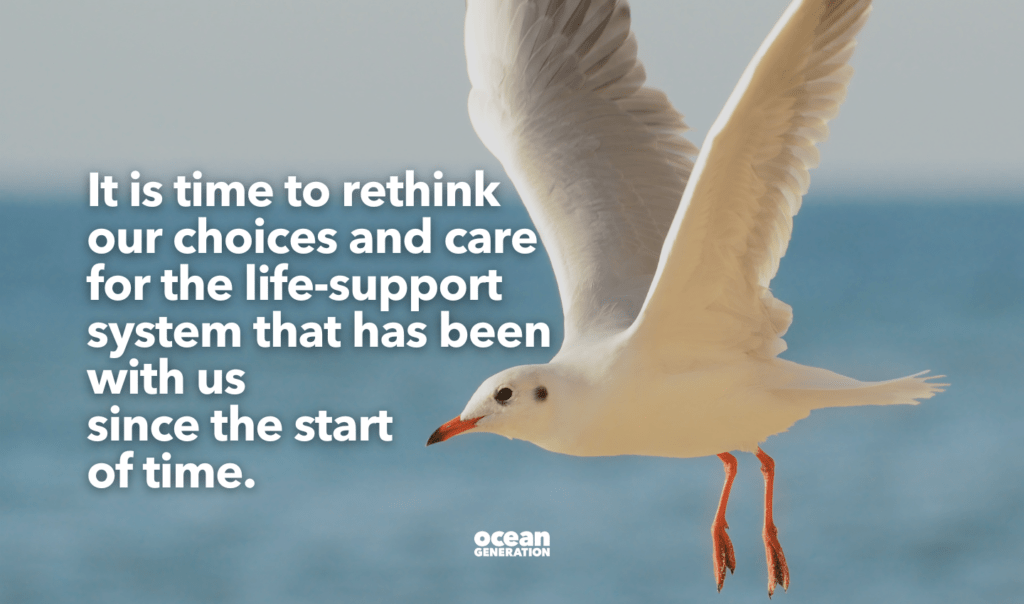- Our Future: Solutions
- Take Action
- Voices of the Ocean
Is it ‘green’ or greenwashing?

How to tell the difference between sustainable fashion and false claims like greenwashing
The fashion industry is swept up in buzzwords — especially when marketing sustainable fashion. “Eco-friendly”, “natural”, “green”—the list goes on. But what do they mean? Do they have substance, at all?
Most of them are fluff, jargon to make a brand sound environmentally conscious without any true scientific backing as to their impact on our blue planet. Sustainability is easy to market, but hard to prove.
Saying that, we can welcome our next buzzy term into the mix —greenwashing.
What is greenwashing?
No, greenwashing is not an expensive non-toxic clothing detergent or the latest dry cleaning method.
Greenwashing is “the act or practice of making a product, policy, activity, etc. appear to be more environmentally friendly or less environmentally damaging than it really is”.
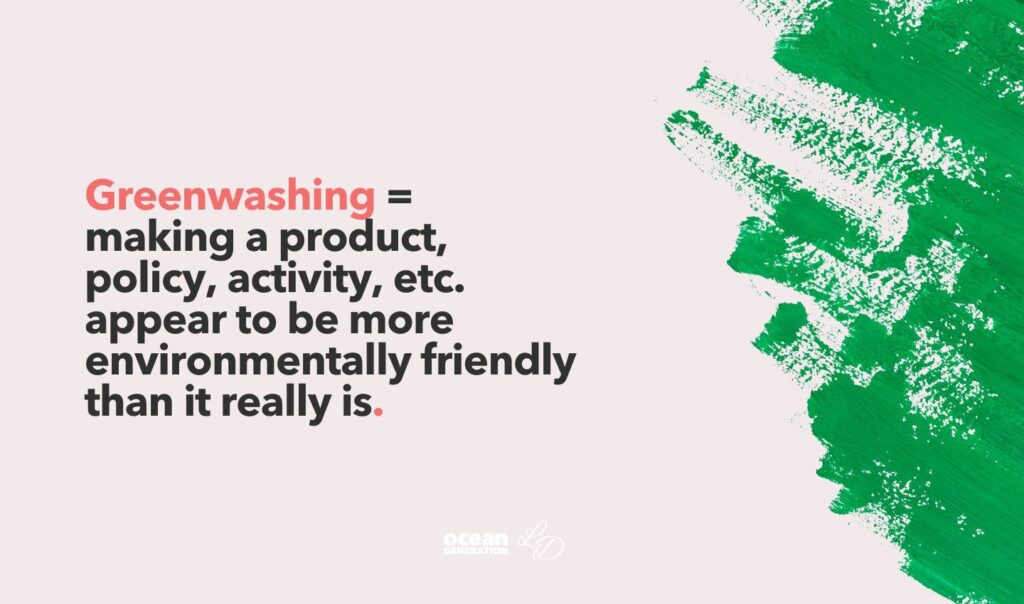
What is greenwashing in fashion?
Greenwashing in fashion can range from a fast fashion brand debuting a “sustainable” collection that lacks evidence supporting how it is environmentally conscious, to sprinkling eco-friendly terms into marketing without defining what they mean.
In short, greenwashing is the use of false claims to hop on to the sustainability trend without evidence (if only Legally Blonde had come out now, Elle would be all over this one!).
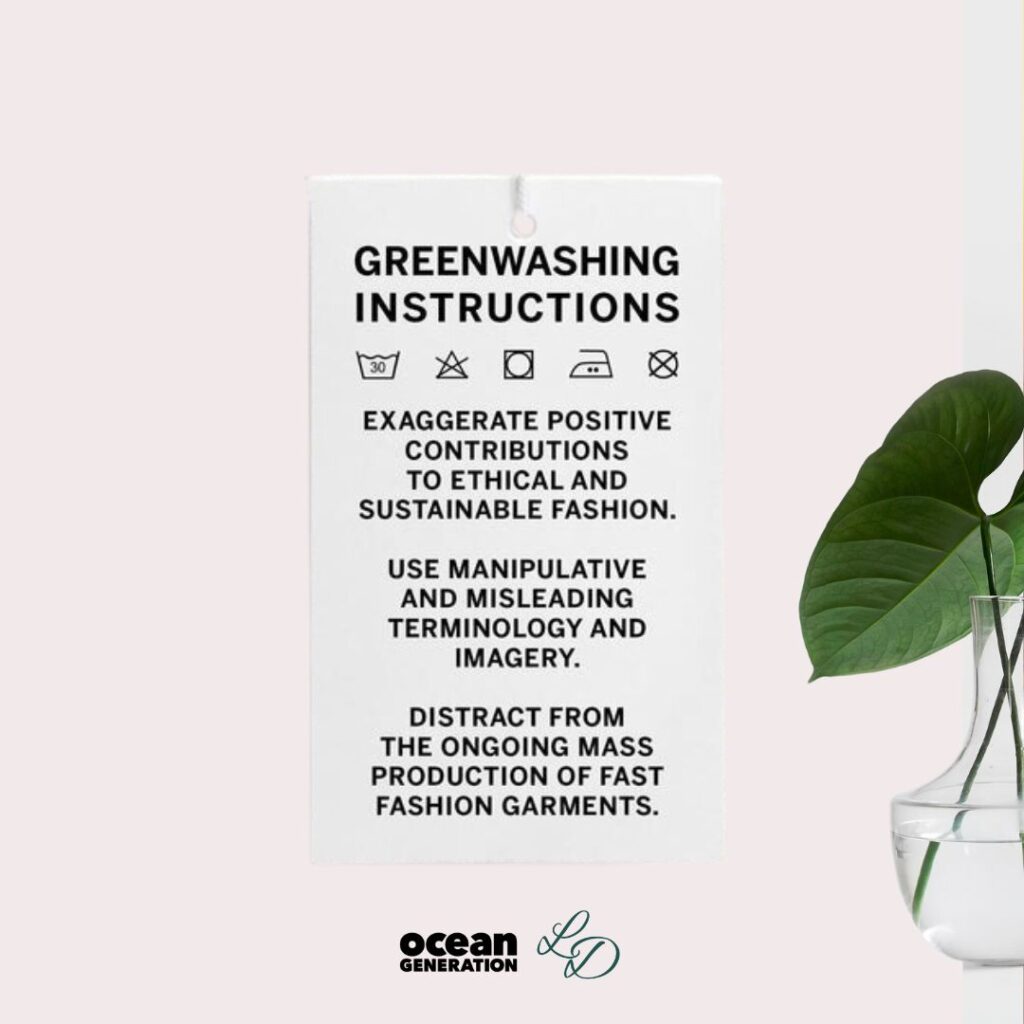
How can you tell the difference between sustainable fashion and false claims?
5 ways to identify greenwashing in fashion.
If you see these red flags, run!
- The use of sustainability jargon, such as “green”, “eco-friendly”, “sustainable”, and “natural” in marketing without a definition explaining what the brand means when using the term.
- A fast fashion company that comes out with new items often (think: daily, weekly, monthly, even large numbers released seasonally) markets their new line as “sustainable”.
Releasing large volumes of clothing indicates that the company as a whole is not following an earth-conscious business model and thereby cannot justify one of their lines truly being sustainable. - Claiming fabrics to be “organic” or “non-toxic” without certifications to support (see below for more information on certifications to look for).
- The lack of scientific reports exploring their sustainability impact . If a brand has the data to prove how they are sustainable, they will show it.
- Using the term “vegan” to make clothing sound like a healthier, cruelty-free alternative , when the fabric is derived from petrochemicals (meaning, they are fossil-fuel derived plastics).
However, some “vegan” fabrics are plant-based materials, which would be a sustainable alternative.
Watch: Lydia’s short video about how to avoid plastics in clothing.
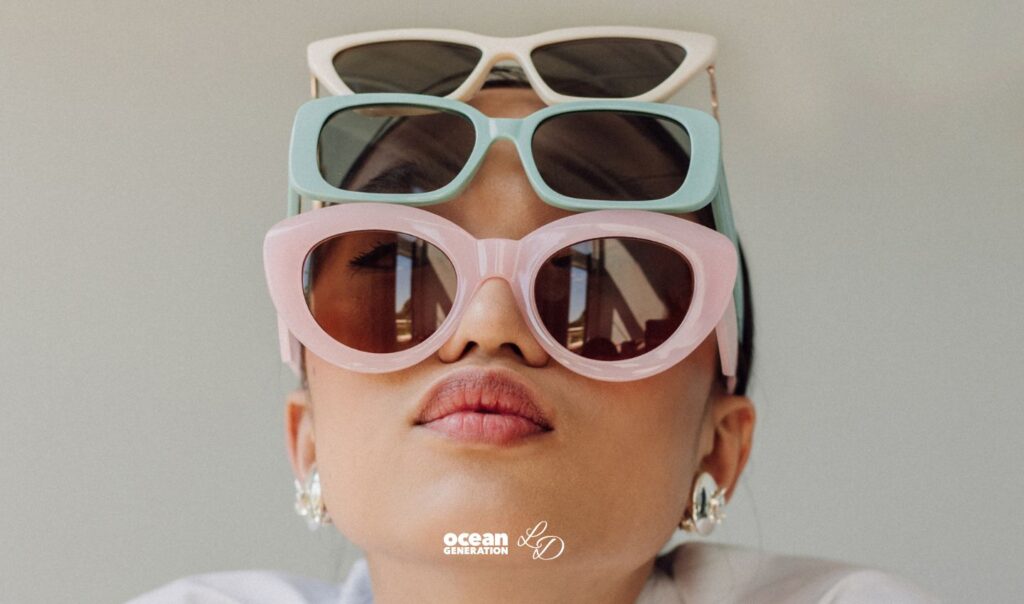
5 signs of sustainable fashion.
Look for these green flags!
- Look for transparency in fashion.
The brand has sustainability reports backed up by data readily available.
Sustainability reports can include their efforts towards lowering carbon footprint, reducing water usage and overall waste, treating and paying garment workers fairly, and outlining future sustainability goals. - How traceable is your clothing?
Clothing is fully traceable back to the source, such as the farm that grew the cotton or the alpaca whose wool you are wearing. - Is your sustainable clothing certified by credible sources?
Fabrics and processes can be certified by credible sources, such as:
➡️ What does a GOTS certification mean?
Global Organic Textile Standard (GOTS) ensures no pesticides or insecticides are used in farming and all chemistry used by the brand in the production of clothing is in alignment with being truly organic.
GOTS-certified facilities also adhere to social criteria based on leading social sustainability standards.
➡️ What is OEKO TEX in the fashion world?
OEKO-TEX® is all about chemical safety. They have a variety of certifications, but the most popular one is the STANDARD 100 which ensures that the final product was tested to confirm that it is free from over 3,000 different toxic chemicals.
➡️ What does bluesign credibility mean?
bluesign® approved facilities look at the overall chemistry used by a brand from fiber to finished product to ensure safe chemistry practices are used.
➡️ What is Fairtrade?
Fairtrade International and Fair Trade USA follow criteria that support ethical working environments for farmers and garment workers, eco-friendly practices and prioritise fair pay.
- Are the clothes you’re wearing part of circular fashion?
“Circular” fashion stops the linear “take-make-waste” model of fast fashion and instead closes the loop on production, including responsible manufacturing, use, and recycling for every garment.
Look for brands that have take-back programs to recycle and reuse garments when they are at the end of life. - Is the clothing you’re wearing from small batch production?
A brand launches only a few items at a time in a limited supply to combat waste from the fashion industry, such as increasing landfills.
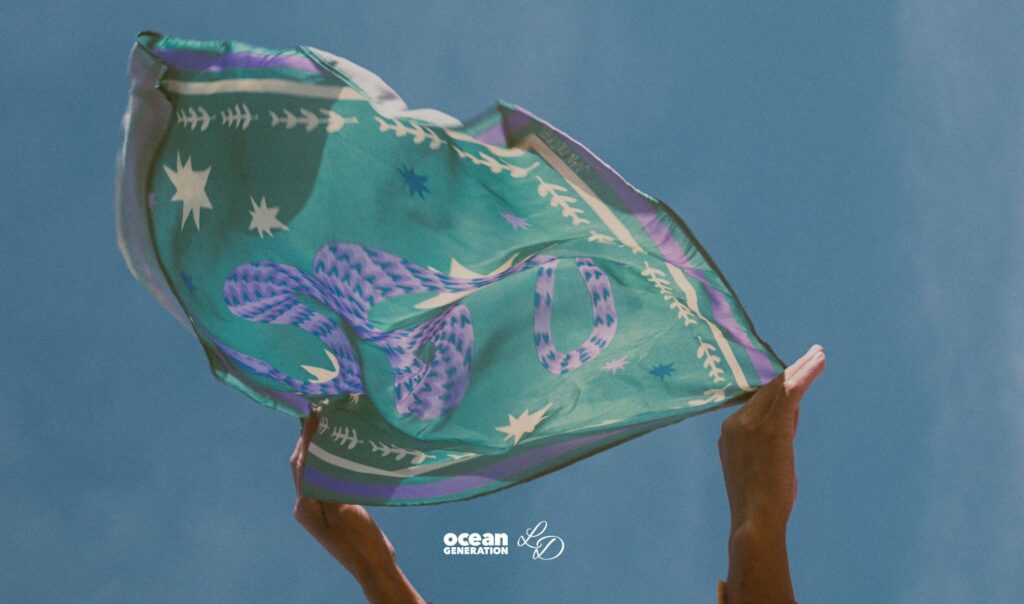
Now in the know.
Although greenwashing is an indicator that the industry is slowly becoming more conscious of their impact on the environment.
But the only way to truly make a positive difference is to be honest and straightforward in their environmental efforts.
Every decision we make – from what we wear to what we eat and how we move – has an impact on the future health of our Ocean and planet.
With these tips to spot greenwashing, you’re now equipped to decipher the sustainability cons from the true conservationists. Go forth with your newfound skill and tell a friend.
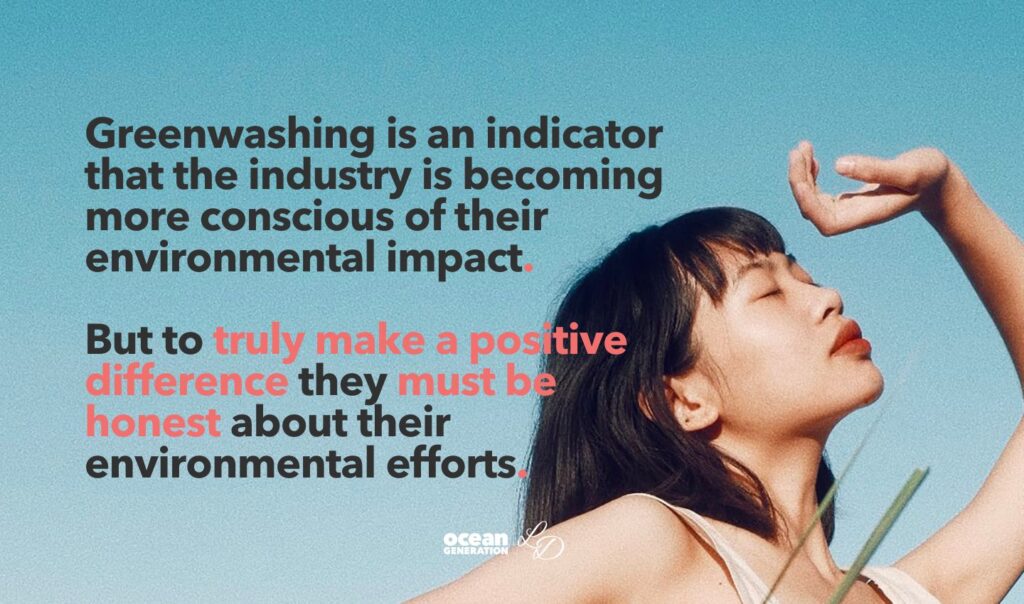
Connect with Lydia via her website or Instagram page.



